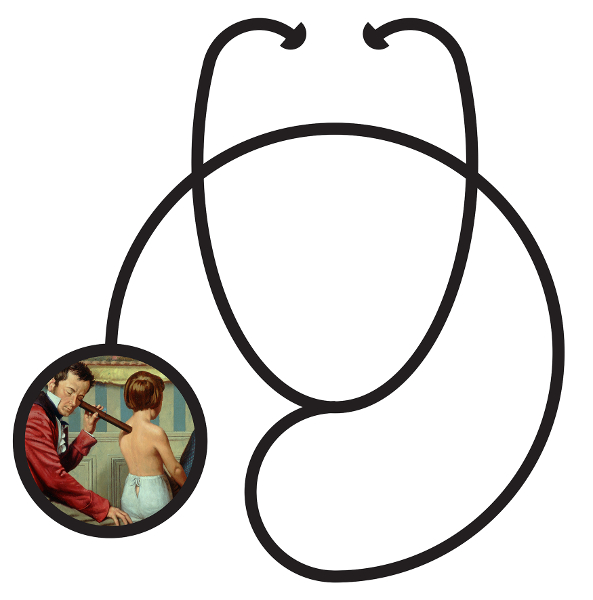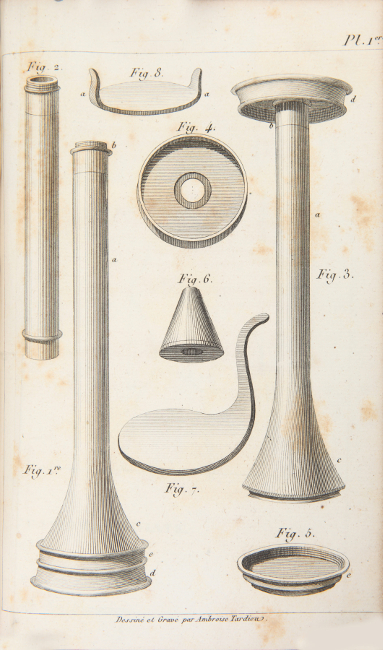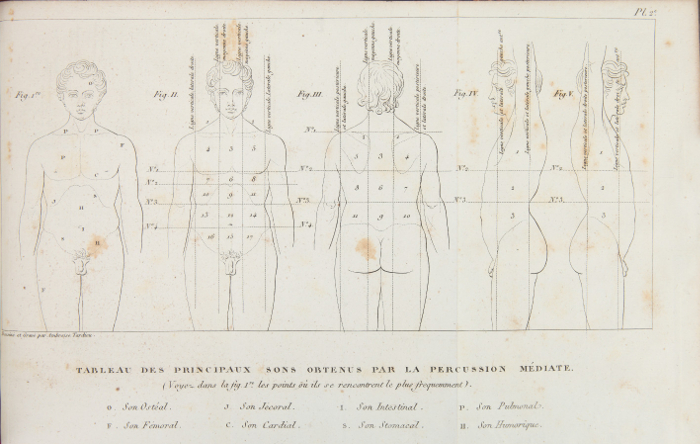Palau de Cerveró. Sala José Puche

Valencia, 1 December 2016 Coinciding with the 200th anniversary of the stethoscope’s invention by Dr. R.T.H Laënnec, the Palau de Cerveró of the Universitat de València dedicates an exhibition to explain the evolution of one of the most well-known medical instruments. The exhibition is inaugurated on 1 December at 19h and will be open to visits until 23 March.
In the showing ‘Listening to auscultate. The sounds of Medicine’, it is explained the typology of this key element in consultation, which is a symbol of the medical profession, the evolution of the knowledge about the human body and the relationship with the patient.
The exhibition includes pictures and texts, as well as original documents from the Historic Library IHMC López Piñero (among others, the second original edition of the book by René Laënnec ‘Traité de la auscultation mediate et des poumons et du coeur’, 1826) and carries out a tour through some old stethoscopes from the 19th century (ceded by the Ilustre Colegio de Médicos de Valencia (Valencian College of Medicine), or selected from the scientific-medical colection of the Universitat de València, among others), to the most modern ones from the present day.

The historical materials contrast with the illustrations made by the draughtsman Raúl Salazar or the audio-space of the room, where, using headphones, you can hear some real cardiorespiratory sounds, provided by the Department of Medicine (Pneumology and Cardiology) of the Faculty of Medicine of the Universitat de València.
The birth of the stethoscope involved an aural approximation to the inside of the human body. This tool went at its beginning through different materials and shapes, with the aim of improving audition and easing its use. In this sense, it evolved from monaural (one ear) to the well-known binaural (using both ears), and was gradually modifying its components, having as main objective the pulmonary and cardiac auscultation, but also the abdominal sounds, both in adults and children, and also in pregnant women.
The discovery by Dr. R. T. H. Laënnec, who invented in 1816 this artefact by rolling a piece of paper first, and transform it into a wood tube later, collaborated decidedly with the new vision on clinical medicine and the relationship with the patient. This object acquired the stethoscope name, ‘steto’ chest and ‘scopio’ vision, helping to listen with more clarity the cardiac and respiratory sounds in other parts of the body.
The exhibition, whose curator is the paediatrician Joan Lloret, will be accompanied by complementary activities such as a seminar dedicated to auscultation and other considerations in clinical evolution, as well as a film series that will take place in February and will be compounded by a selection of films related to technology in medical advances.












